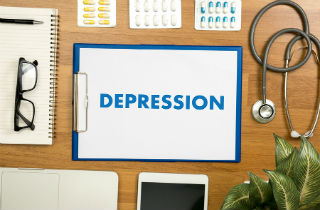Treatment May Require an Overlap in Care
There are many great residential treatment centers out there that treat teenagers with mental and emotional disorders, personality disorders and a myriad of conditions that make it difficult for them to cope with daily life. Working with teenagers myself, I have seen the impact that mental illness can have on everything from grades to relationships in young people. The impact can be truly devastating.
There are a select few residential treatment centers that treat teens for substance abuse. They’ve met strict guidelines and licensing requirements necessary for this form of treatment that other residential treatment centers have not. Teenagers who are suffering from substance abuse need specialized care.
However, there is an overlap that is commonly seen. Substance abuse might only be tangentially addressed but most of those who are needing some kind of intervention have greater mental health issues to work on. ADD, ADHD, personality disorders, mood disorders and depression are often seen in patients who are working through alcohol or drug use.
Which begs the question: what is the correlation?
What Comes First, Substance Abuse or Depression?
Anyone who has spent time with people in early recovery knows that a big part of overcoming the disease is to take responsibility for that addiction. While there has been found to be a genetic component to addiction itself, the user must then also recognize they could be more predisposed towards addiction were they to begin using an addictive substance.
That makes seeing the connection between mental illness and addiction difficult. Studies have shown that there is certainly a cycle between the two. So while a teen may be more likely to have addictive traits and characteristics, the added pressure of poor mental health and a lack of coping skills can be a quick trigger to escape difficult emotions with drugs and alcohol.
The Mental Illness Connection
Much of the cycle seems reliant on the use of substances, whether street drugs, prescription drugs or alcohol, as a form of self medication and distraction from difficult emotions. Young adults and teens struggling with mental illness can quickly learn to deal with these issues by making them “go away” by using drugs. Is it really such a far stretch in the mind of a teenager to swap antidepressants for opiods? After all, they’re treating their mental illness with medication in the end. The thought process is easy to follow.
Unfortunately, the use of opioids and other addictive substances increases symptoms of depression and other emotional disorders. When the high wears off, teens may find themselves more depressed, desperate or facing psychosis in their sober state. It makes treatment difficult, especially in teenagers who have trouble coping with difficult emotions and who have not yet seen a completion in their brain development.
Breaking this difficult cycle is nearly impossible without first detoxing from drug use and then immediately starting therapeutic treatment for emotional trauma and mental disorders.
Breaking the Cycle
To break the cycle, most people require professional help and a deep commitment to well-being When both emotional and substance use problems are present in teens, a lack of understanding about how they are connected can keep us in a loop. For example, once substances are no longer being used, we are faced with the very real pain and struggles of mental illness and depression that led to self-medicating in the first place.
This is why it is important to learning about solutions and to try out different methods of treatment.
During my time working with teens, I have seen them facing these demons as their source of coping is removed. Teaching them better skills for managing these feelings is critical. That must be done in addition to work on their sobriety, a task that is difficult even for adults with years of experience before the addiction took hold.
While it is a process that can take a long time to be effective, there are some first steps for anyone who is suffering from both addiction and depression or other mental illnesses:
1. Go through a substance abuse detox.
2. Get involved in a twelve step or a peer support program.
3. Seek therapeutic assistance to manage mental health.
4. Become properly medicated with prescription mental health drugs.
5. Develop healthy relationships with friends and family dedicated to helping the sufferer maintain sobriety.
Other methods are somewhat controversial but may work under medical guidance. These include the use of medications such as methadone and suboxone to manage serious cravings or long time drug abuse.
In the end, there are no easy answers when it comes to breaking the cycle of depression, addiction and mental illness. But with the proper support it can be done at any age and a better way of living can be achieved.









Related Posts